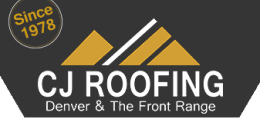Storm Damage Roof Repair – Tips on How to Manage
3/27/2016
When that big storm hits – whether expected or out of the blue – you need to promptly inspect your roof for damage and make preparations for storm damage roof repair.
Roof damage, as well as downed trees and power lines, can occur even at wind speeds of 50-60 mph, although that wind speed is not even classified as hurricane strength. Following a destructive storm, you may find yourself and your family members overwhelmed by stress and anxiety at the enormity of your losses.
Here are some useful tips in dealing with this type of catastrophe that will make the process flow just a little bit more smoothly.
- The first rule of roof repair. No matter how tempted you are, absolutely do not attempt to make any repairs on your own. The situation may be precarious and just too dangerous for an amateur to undertake.
- Take stock of the damage. Document the damage to your roof and other property by taking a lot of photographs and writing detailed notes. Should any disputes arise, it’s always useful to have your own copy of the materials that the insurance adjuster will be using to evaluate your claim. During your post-storm roof inspection, you should record any missing shingles, broken gutters or destruction due to tree damage. If possible, also look in the attic for evidence of leaks or other problems.
Learn more about how to identify storm damage that may be hard to spot >
- Validate contractor expertise. It’s wise to ask potential contractors basic questions, such as whether they are credentialed and if so, in what areas. Contractors who use CertainTeed Roofing products, for example, can gain professional credentials as “ShingleMaster” or “SELECT ShingleMaster” through extensive credential testing and by abiding by a code of ethics.
Other important qualifying questions include whether the company is certified in storm restoration work, its business location (always go local so you can easily keep in contact), the number of years they have been in business, and names of references you can contact.
- The fine print. Regardless of which contractor you choose, always make sure they are fully covered with both liability and workers’ compensation insurance. You must have this financial protection in the unlikely event that a worker gets injured on the job. In addition, some states and municipalities have unique licensing requirements for roofing contractors.
You may want to research whether your location requires licensure and if there is a public website available where you can look up potential contractors.
- Talk to your insurance company. Make sure that you are knowledgeable of all the factors of your roofing repairs. For example, if you need to use roofing products engineered to protect against potential hail or wind, be sure to find out up-front so that special requirements can be properly incorporated into your quote.
Following these guidelines will give you the first steps to cover yourself for virtually any contingency that may arise, especially related to storm damage roof repair. Remember– keep asking questions as the job progresses. It’s your roof and you have a legitimate say in ensuring that the job comes out right!
